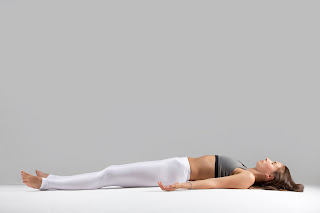Padmasana, its benefits and importance
Padma means lotus and asana means posture. It is a cross-legged yoga asana that is mainly used to perform pranayama and meditation.
How to do Padmasana?
- Sit on the floor with legs straight. Now, bend the right leg at the knee and place it on the left thigh as close as you can to the origin of the thigh muscles.
- Now, bend the left leg and put it on the right thigh.
- Both knees should be on the ground and the soles of the feet must be upwards.
- Spine must be kept straight. This is basic padmasana.
- Hands can be kept in the lap over one another or in a specific mudra.
Variation 1- Baddha padmasana
After assuming padmasana, pass the left arm behind the back and grab the toe of the left foot and then pass the right arm behind the back to grab the toe of the right foot. This pose is more suitable for advanced disciples. Once you can do this pose easily, you can bend forward while holding the toes and put your forehead on the ground, and relax in that position. This pose massages the abdominal organs powerfully
Variation 2- Ardh padmasana
In this pose, only one leg is kept above the thigh of another leg while keeping the other leg on the ground below the opposite thigh. This is an easier version of padmasana and quite doable even for beginners.
Tips for beginners
- At the start, knees, and ankles will pain a lot but it will go away with time and practice.
- Handle your knee joints carefully and do a proper warm-up if you are a beginner. Knees will get flexible with time. If you hurt them by doing wrong practice, you will have permanent issues.
- People having a history of knee and ankle injury should do this asana under proper guidance.
- Master baddhakonasana before doing padmasana.
- In the beginning your legs may fall asleep after sitting in this asana for several minutes but it is very normal due to restricted blood flow in the legs.
Benefits of padmasana
- Improves the functioning of the digestive system by increasing the blood flow to the abdominal region.
- Calms the nerves and reduces mental stress.
- Makes knees and ankles strong and flexible.
- Eases childbirth in females.
- Reduces menstrual cramps and pain.
- Keeps the mind attentive.
Contraindications
People suffering from sciatica and sacral infection should not attempt padmasana.
As per hatha yoga pradipika, padmasana is one of the best asanas to practice pranayama and meditation.
One should sit in padmasana, focus on the tip of the nose and apply bandhas under the guidance of a master. It will destroy all the diseases and balance the whole system. Padmasana combined with bandhas, mudras, and kriyas increases the prana and dormant centers of the mind are awakened.


Comments
Post a Comment